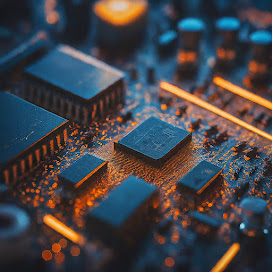INTRODUCTION TO FUZZY LOGIC AND ITS APPLICATION
 What is Fuzzy Logic?
What is Fuzzy Logic?
What is fuzzy Logic ?
Fuzzy logic, introduced by L. Zadeh in 1965, is a mathematical framework that deals with the concept of partial truth. Unlike classical logic, where variables must be either true or false, fuzzy logic allows variables to have a truth value that ranges between 0 and 1. This spectrum enables systems to handle the uncertainty and vagueness inherent in many real-world situations.
Concepts Key:
Fuzzy Sets: In fuzzy logic, a fuzzy set is a class with a continuum of membership grades. For example, the concept of "tall" can be represented by a fuzzy set, where different heights have varying degrees of membership in the set.
Membership Function: This function defines how each point in the input space is mapped to a membership value between 0 and 1. For example, a person 5'9" tall might have a 0.7 membership in the "tall" set, while someone 6'2" might have a 0.9 membership.
Linguistic Variables: These are variables described in natural language. For example, temperature can be a linguistic variable with terms like "cold," "warm," and "hot," each represented by fuzzy sets.
Applications of Fuzzy Logic
Fuzzy logic is widely used in various fields due to its ability to model complex systems and make decisions in uncertain environments. Here are some prominent applications:
1. Control Systems:

Fuzzy Logic in Control system.
Fuzzy logic is extensively used in control systems, such as in the regulation of home appliances like washing machines, air conditioners, and refrigerators. By using fuzzy logic, these devices can operate more efficiently by adjusting their behavior based on a range of input conditions, rather than rigidly following a set of predefined rules.
2. Automotive Systems:

Introduction to Fuzzy Logic
in Automotive System.
In the automotive industry, fuzzy logic is employed for various purposes, including:
3. Decision-Making Systems:
Fuzzy logic is also applied in decision-making systems, particularly in areas like finance, medicine, and engineering. For example:
Medical Diagnosis: Fuzzy logic helps in diagnosing diseases by interpreting symptoms that are not always black-and-white, allowing for more accurate and nuanced conclusions.
Stock Market Analysis: It aids in analyzing market trends and making investment decisions by handling the inherent uncertainties in financial data.
4. Artificial Intelligence and Machine Learning:
 |
| contribution of Fuzzy Logic in A.I |
5. Image and Signal Processing:
Fuzzy logic is applied in image processing for edge detection, noise reduction, and pattern recognition. In signal processing, it helps in filtering and interpreting signals that are noisy or imprecise.
Conclusion:
Fuzzy logic represents a significant leap forward in how we approach problem-solving in uncertain and complex environments. By allowing for degrees of truth rather than binary outcomes, it provides a more flexible and human-like way of reasoning.
As technology continues to advance, the applications of fuzzy logic will only expand, making it an indispensable tool in fields ranging from engineering to artificial intelligence.
Whether it's in controlling a household appliance, improving vehicle safety, or making critical decisions in healthcare, fuzzy logic is at the forefront of innovation, helping to bridge the gap between human reasoning and machine precision.





0 Comments